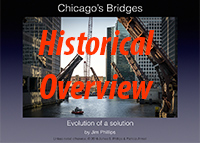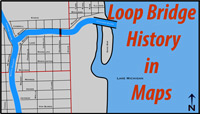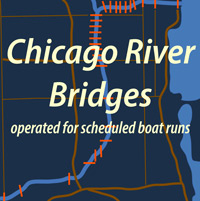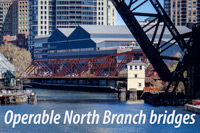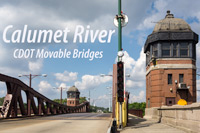W. Monroe St. bridge - opened February 22, 1919
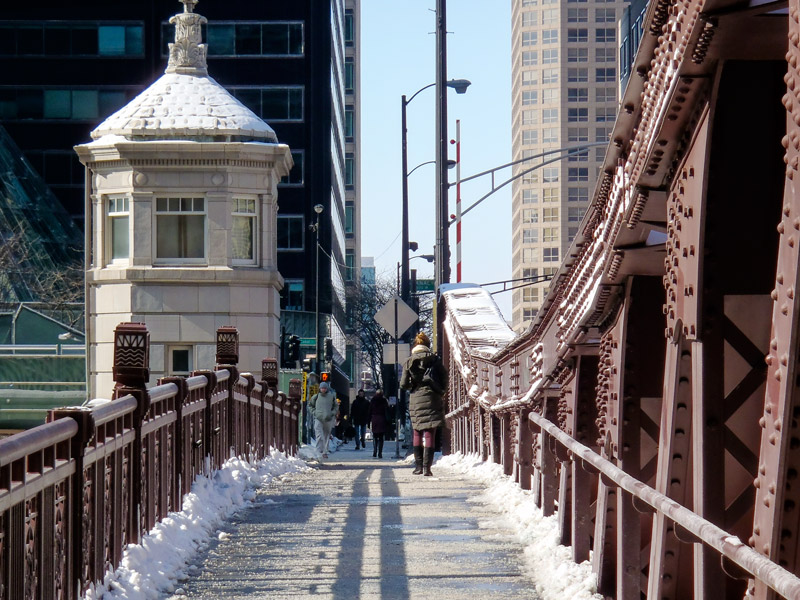
Looking west along the Monroe Street bridge
“MONROE STREET BRIDGE OPENED IN DRIVING STORM,” read the headline in the February 23, 1919 edition of the Chicago Daily Tribune. The article summarized the dedication ceremonies held the day before. Street cars took the dignitaries from city hall to the bridge in a “driving snowstorm.” As part of the celebration, Mayor Thompson was made an honorary member of the bridge operator's local union 102, after which he operated the bridge.
The Monroe Street bridge is unique in a number of ways. While the bridge was designed, operated, and maintained by the city, it was built with private funding.
The 1909 Plan of Chicago initially intended the location of Union Station to be near Roosevelt road and the South Branch of the Chicago River. Railroads and businesses were concerned that a location so far south of the Loop would hurt business. Ultimately a deal was struck. The city allowed Union Station to be built at its current location and the Union Station Company funded the construction of the Monroe Street bridge.
Unlike any of its nearby South Branch neighbors, the Monroe Street bridge is the first and only bridge ever built at its location. In fact, this is the youngest crossing on the South Branch between Van Buren and Lake streets.
The location for this bridge presented some interesting design problems as well. Railroad tracks on the west bank of the river presented issues with counterweight design and location. On the east bank of the river, two freight tunnels had to be accounted for. To account for these conditions, separate designs for each leaf were ultimately developed.
The elevation drawing illustrates the differences. The west leaf (left side) has a shorter counterweight arm with cast iron weights visible above the deck. With this design, the enclosed counterweight pit was not needed so water is below the bridgehouse. The east leaf (right side) is more “traditional” in its design with the longer counterweight arm, concrete counterweight, and enclosed pit.

Adapted Elevation of the W. Monroe St. Bridge looking north (1915 drawing provided courtesy of CDOT, Division of Engineering
The engineering team for this bridge consisted of familiar names for the period. Taken from the 1915 “General Plan” drawing, the engineers and their titles were: Hugh Young, Bridge Designing Engineer; Alexander von Babo, Engineer of Bridge Design; Thomas G. Pihlfeldt, Engineer of Bridges and Harbor; and John Ericson, City Engineer.
This bridge is an attractive 95 year-old having been rehabilitated in 2001. The bridgehouses were rebuilt in 2008. The plaques commemorating the initial construction in 1919 and the the 2008 project are shown.

Bridge plaques at the Monroe Street bridge - 1919 plaque on west bridgehouse - 2008 plaque on east bridgehouse
Note: sources include: Chicago Daily Tribune Feb 23, 1919 (ProQuest Historical Newspapers Chicago Tribune (1849-1985); Chicago Sun-Times Jul 27, 2008; Historic American Engineering Record IL-53, Library of Congress, 1986; “Two Miles Eighteen Bridges – A walk along the Chicago River.”

